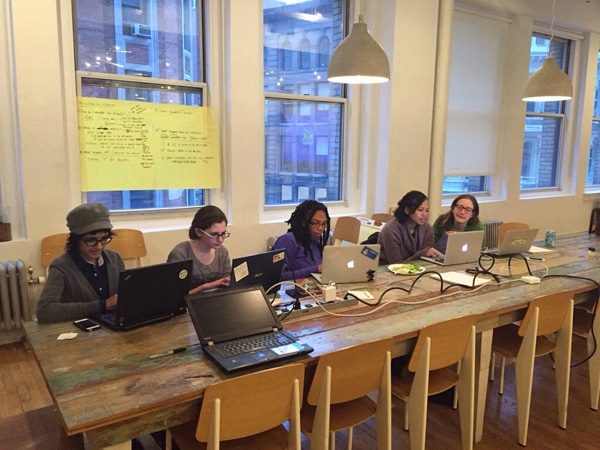Technology Initiative
CLOSING THE GLOBAL GENDER GAP IN TECHNOLOGY
Access to technology, control of it, and the ability to create and shape it, is a fundamental issue of women’s human rights. Global Fund for Women’s Technology Initiative aims to help end the gender technology gap and empower women and girls to create innovative solutions to advance equality in their communities. For instance, with a mobile phone, a pregnant woman in a rural area can stay connected to a midwife. For other women and girls, Internet access and a mobile phone can mean access to a bank account for the first time, a new tool to learn how to read and write, or a way to stay safe and avoid harassment in a crowded city.
Priority issues
Closing the gender gap in access and control of technology
Worldwide, 200 million more men than women have access to the Internet, and women are 21 percent less likely to own a mobile phone—a key resource in the global south where phones provide access to safety, organizing networks, early warning systems, mobile health care, and money transfers. Global Fund for Women’s Technology Initiative will help to close this gap and give women and girls the tools and access they want and need.
We will support efforts that focus on the production of new technology or adapting technology to women’s and girls’ contexts. We will support women’s groups who use such technology to address issues including violence against women, safety and access to safe spaces, political empowerment, education, and health care. For example, a current grantee partner has created a mapping tool to crowd-source reporting of sexual harassment in Egypt, and to then document and monitor it.
As part of this effort, Johnson & Johnson will help us support women-led organizations in Sub-Saharan Africa and Southeast Asia using technology to enhance health service delivery and outcomes.
Girls’ STEM and IT education and digital literacy
Closing the gender technology gap means helping girls access training and educational opportunities in STEM (science, technology, engineering, and math) and IT (information technology). We will invest in work that helps empower girls and women to pursue opportunities in these fields.
 For example, Global Fund for Women grantee partner Feminist Approach to Technology in India is creating a movement of tech savvy young women and girls by training and engaging young women aged 12-18. They offer through confidence and skills-building courses alongside computer classes and trainings. In Sub-Saharan Africa, we have supported for Women Educationalists in Malawi and Mozambique to develop a science, math, and technology model that includes both in-school and extra-curricular activities to increase girls’ interest and participation in STEM.
For example, Global Fund for Women grantee partner Feminist Approach to Technology in India is creating a movement of tech savvy young women and girls by training and engaging young women aged 12-18. They offer through confidence and skills-building courses alongside computer classes and trainings. In Sub-Saharan Africa, we have supported for Women Educationalists in Malawi and Mozambique to develop a science, math, and technology model that includes both in-school and extra-curricular activities to increase girls’ interest and participation in STEM.
Making the Internet safe
The UN estimates that 95 percent of harassment, abusive language, and derogatory imagery in online spaces is aimed at women. We will invest in projects and advocacy for safe online spaces, and in raising awareness to end cyber bullying and online violence against women.
One such project is run by Si Jeunesse Savait and uses information technology to denounce the high rates of sexual violence in the Democratic Republic of Congo. Si Jeunesse Savait trains women’s groups and survivors of violence on online security, online advocacy, how to write blogs, and accessing online services.
Building capacity and driving women’s movements
Digital technology is an increasingly important tool for movement building, allowing organizations and networks to exchange information rapidly, and to organize across geographical locations. It also creates opportunities for a diversity of voices to be heard and shared—an important feature of strong social movements.
Global Fund for Women will ensure women’s movements globally benefit from the organizing power of new technologies.
What the Technology Initiative will achieve
- Improved access to and control of technology for women and girls, especially in remote and marginalized areas
- Creative technology-based solutions to key gender equality issues like violence, health, and economic and political empowerment
- More safe online spaces for women and girls, and women’s rights organizing
- More women and girls playing leadership roles in designing and shaping technology, especially to advance women’s rights
- Stronger, more inclusive national and global women’s movements, collaborating regularly to share resources and ideas, and develop common advocacy strategies